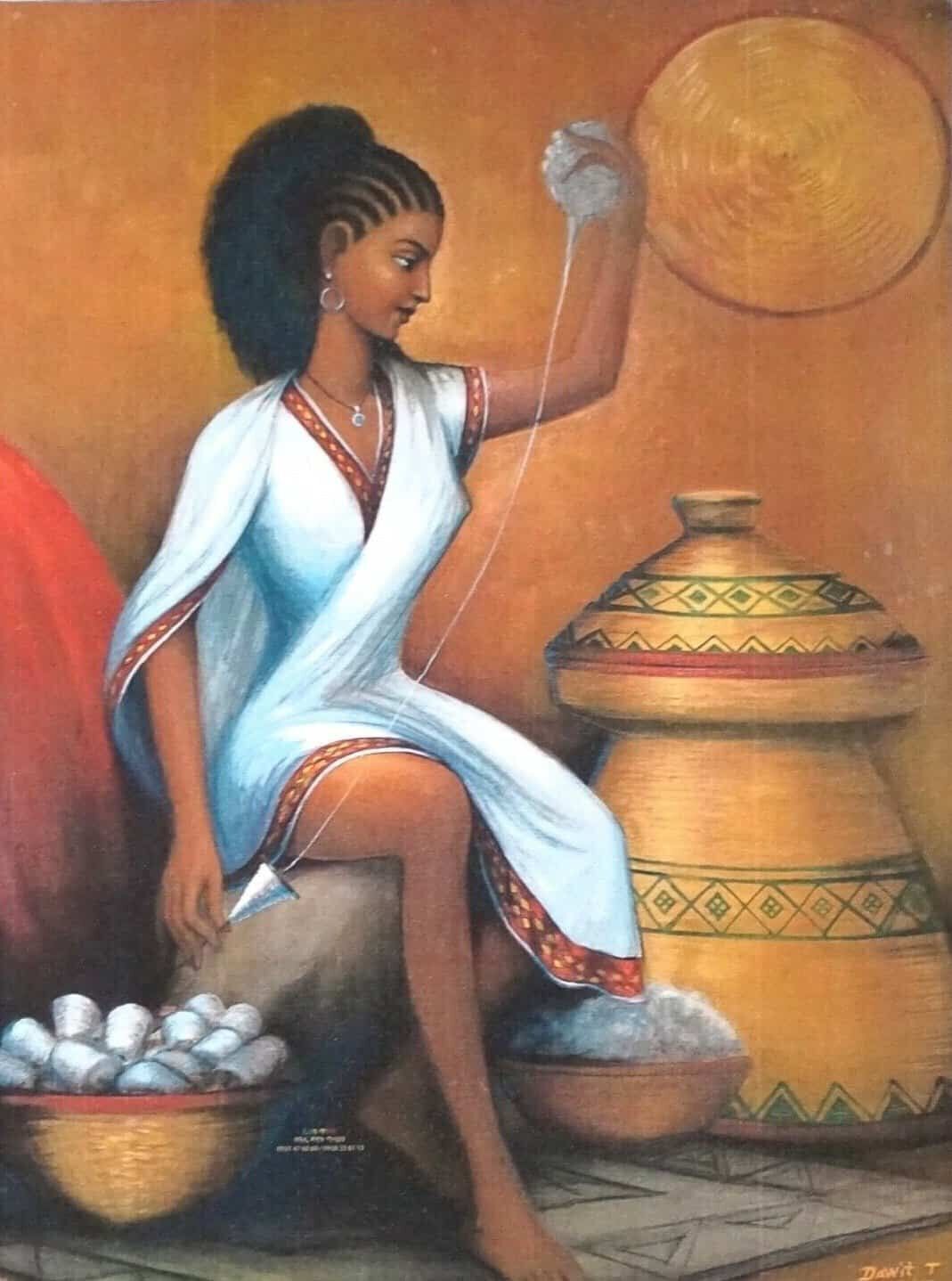 The story of Ethiopian cotton is part of a greater cotton saga that covers the globe and reaches back into ancient times. A strong and vibrant cotton industry still exists in Ethiopia today on large and small farms, both private and government owned, including artisan coops that create beautiful, luxurious textiles from cotton raised and processed on small farms.
The story of Ethiopian cotton is part of a greater cotton saga that covers the globe and reaches back into ancient times. A strong and vibrant cotton industry still exists in Ethiopia today on large and small farms, both private and government owned, including artisan coops that create beautiful, luxurious textiles from cotton raised and processed on small farms.
Dynamic History
Soft, fluffy, white cotton has been under production at lower elevations in rural areas of Ethiopia for millennia. The making of cotton cloth for traditional clothing has occupied both rural and urban artisans in a country that has long been the most important center for handmade cloth in Eastern Africa. This textile tradition has proven to be resilient, dynamic and adaptable to change. Current Ethiopian cotton production is the second highest in Africa and a high priority for a government that hopes to use the textile industry as a springboard to restart and sustain rapid economic growth.
Culture of Cloth
Spinning was learned and practiced by most social classes in Ethiopia and was considered a fashionable and appropriate activity for noblewomen well into the 20th century. Clothing defined rank and status in this complex hierarchical society throughout Ethiopia’s history. Guilds of specialist weavers, embroiderers and tailors worked for religious and political elites. One of the most significant garments in Ethiopia’s cultural history is the white cotton shamma, a toga-like shawl worn by both men and women that was made in several types. A lightweight shawl worn by women over a kemis (dress) sometimes had a red border indicating rank and status. The shamma, made in two heavier weights, was worn by men, used as a blanket and even as shrouds for the dead. The manner of wearing the shamma could communicate mood, attitude and intention.;Male weaver making cloth. Photo courtesy Creative Women.Shamma worn by men, one with red stripe to indicate status. North African Textiles.Traditional double treadle loom in use. Photo courtesy Creative Women.
Tried and True Techniques
The tradition of preparing raw Ethiopian cotton has existed since antiquity and is still widely practiced. Ginning, bowing and spinning are the three processes involved. In the past cottonseeds were removed from the boll by tapping the cotton fiber spread out on a flat stone with a iron rod called a medamager. Bowing fluffed up the cotton for spinning by tapping the bow and sending vibrations through the bowstring creating clouds of fluffy cotton fiber. Drop spindles were used for spinning cotton and are still in use today along with spinning wheels. In rural areas, a traveler may find textile artisans using these older methods of production. The double treadle loom (sometimes a pit loom), used historically, continues to be the loom of choice today. Men were typically the weavers; they sat on the edge of the pit and operated the pedals, raising the heddles for efficient weaving.
Handspinning. Photo courtesty Creative Women.Fluffing fiber with a wooden rake, similar to the bowing process.
Contemporary Artisans and Their Supporters Sabahar is an Ethiopian company founded in 2004 that creates a variety of hand woven cotton and silk textiles. The company is founded on principles of innovation, sustainability and caring for each other. The weavers create exclusive designs for Creative Women, a woman-owned company that focuses on importing and marketing collections made in Africa that are sustainable, ethical and designed to bring artisanal traditions to those looking for natural textiles.
Ethiopian women spinning on modern spinning wheels. Photo courtesy Creative Women.Weaving on large treadle loom. Photo courtesy Creative Women.
Resources
Gillow, John, 2003, African Textiles, Chronicle Books, San Francisco.
Spring and Hudson, 1995, North African Textiles, Smithsonian Institution Press, Washington DC.
